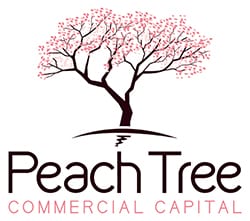As we hit the midpoint of 2023, the possibility of a recession in the second half of the year remains possible. Though inflation continues to impact economies around the globe and the labor market remains tight, the anticipation of a recession has been pushed out toward the end of the year. Though growth has slowed, the reason GDP has continued to grow is the pause in interest rate hikes following the failure of Silicon Valley bank, but as that begins to seem a distant past and banks have had time to reposition, the government’s cooling efforts may continue. Consumers are finding themselves squeezed from all sides by persistent inflation, slower income growth, reduced access to credit, student loan payments, and reduced savings.
At the same time, those in the construction sector have likely noticed the 30% drop in home sales and the subsequent impact that has on building. Supply chain activity has hit its lowest point since the beginning of 2020 and inventory managers are recalibrating to account for the drop in demand. The reopening of China following COVID lockdowns has helped, but many businesses have become much more targeted in their investments.
The good news in all this (yes, there’s good news) is that, as a business owner, you have access to tools and options that, if implemented wisely, can open up cash flow and allow you to make the targeted, strategic investments that add resilience to your bottom line. Banks are indeed tightening credit standards. While that’s not expected to change any time soon, banks aren’t your only option if you’re looking for financing.
Just as banks have repositioned their investment strategies to weather a changing economy, many business owners have refinanced to reduce monthly costs and extend repayment horizons to become more resilient in the short term. This article discusses several standout financing and refinancing options. To take advantage of them, our brokers can help you target the right options.
SBA Loans
SBA loans have long been a reliable financing fallback for small businesses. Only businesses that have been turned down by other lenders are eligible, but with traditional lenders tightening their credit criteria, that means more businesses qualify.
SBA loans support businesses that have tapped out their financing options. SBA 7(a) loans allow refinancing as well as provide working capital. SBA 504 loans also offer refinancing, albeit without the added working capital. Which option is better depends on individual business structures and personal financial situations. Both, however, share some notable benefits.
With SBA loans, you can expect a long repayment timeline with reasonable monthly rates. In addition, it’s possible to consolidate several loans into one SBA loan, eliminating the hassle of juggling multiple accounts. You can’t approach the SBA directly, however, since they back loans, not provide them. To get approved swiftly and with the right rates through an SBA-backed lender, you’ll need to find the right one, which is why it’s important to work collaboratively with a loan broker to complete the process.
Commercial Mortgage Refinance
Many CRE investors don’t opt for a commercial mortgage right away. Some businesses take out a bridge loan to make a cash offer so they can be more competitive when it comes to select markets. Other businesses choose short-term financing, waiting for interest rates to drop before deciding on permanent financing.
Bridge loans and other short-term financing, for obvious reasons, won’t sustain the business for the long haul. The principal on a bridge loan comes due in a few years or even less time. By refinancing, a bridge loan approaching the end of its term can transition into a lower-interest, long-term commercial mortgage or another bridge loan.
Consolidation Loans
For investors who have multiple projects in their portfolio, it can mean having just as many lenders to satisfy. When each one has a different due date, interest rate, and payment amount to keep track of, financing becomes complex. But a business doesn’t have to own multiple properties to have this problem.
A company with credit card balances, an equipment loan, a term loan, and a commercial mortgage faces the same problem. Instead of juggling an array of loans, the business can consolidate all of them into one easy solution. Not only do consolidation loans make accounting simpler, but they can also drop the company’s interest rate payments, freeing up important cash flow.
Portfolio Loans
In commercial real estate, a property manager can lump multiple properties into loans to expand their holdings. While portfolio loans aren’t always refinancing, they’re another way of looking at growth. They share a benefit with consolidation loans in that they help cash flow by reducing financing fees and interest rates.
Underwriting for portfolio loans can also be less stressful than dealing with traditional lenders. That’s because they’re typically asset-based and don’t require the same level of documentation. The lender looks at the current market value of the properties being financed, and the borrower’s credit rating isn’t as much of a focus. That also speeds up the loan process.
Don’t let the uncertainty of today’s volatile market send you into a tailspin. If you stay focused and tap into your available resources, you can weather the oncoming storm. Listen to sound financial advice from your team and make sure a good broker is a part of that team. It’s their job to connect you with solutions when you’re facing difficult financial decisions.
Being proactive to stabilize your financing against recession now will help you avoid compounding problems in the future. Implementing strategies today that free up working capital will help you avoid overdue charges, penalty payments, service interruptions, and hits to your company’s credit. Make the smart move and talk to your broker sooner rather than later.

